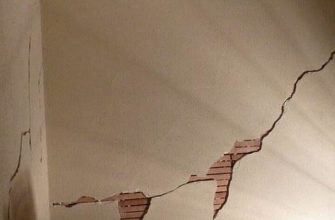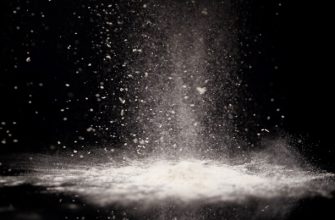Spackling your walls is one of the simplest strategies to prevent frequent repairs. Prior to painting the drywall, spackling is completed. It is also advised if you are repainting already painted walls. Spackling makes sure that the damaged walls are fixed correctly, which contributes to the creation of a superior, completed surface.
A hole in your wall has recently been found, and you’re wondering if you can spackle it over the current paint. Yes, in a nutshell, however there are several crucial elements to take into account to make sure your repair operation is effective and clean.
In this post, we’ll talk about how different types of paint affect whether or not you can spackle over them, how to do it, and a few tactics and advice.
- Whether you can spackle over it depends on the type of paint
- Before using spackle, glossy and semi-gloss paint should be sanded
- Prior to putting spackle on top of oil paint, oil based priming is required
- How to Spackle over paint
- Prepare the wall
- Prepare the Spackle
- Sanding the Spackle Sites
- Paint the final touches
- Take into account the following advices to achieve perfection
- Avoid These Spackling Mistakes
- Conclusion
Whether you can spackle over it depends on the type of paint
Before using spackle, glossy and semi-gloss paint should be sanded
Prior to applying spackle, it is best to sand the surface if you are dealing with glossy or semi-gloss paint. Sanding will refine the surface, but take care not to remove any paint. You will need to repaint before using spackle if this occurs.
Prior to putting spackle on top of oil paint, oil based priming is required
Compared to latex or acrylic paint, oil paint is a distinct animal. It is more difficult to fix and has to be prepared before spackle is used. Since oil paint won’t adhere to itself very well without priming beforehand, you’ll also need to sand down the area where you’ll apply the spackle.
How to Spackle over paint
Prepare the wall
Preparing the wall is the first stage in our episode of “Can you spackle over paint?” Now, you’ll have a smooth canvas to work on the most of the time.
However, occasionally you might discover nails in the wall that are discovered during the scraping and sanding process. Because of this, use a pincer to remove any type of nail and a putty knife to clean your wall. The size 8, 9, or 10 putty knife needed for this process is recommended.
Additionally, keep an eye out for any paper or tape that may be hidden and go missing.
Latex paint may be covered with Spackle, but there are several crucial considerations to make sure your restoration process is effective.
First of all, you should be aware that oil-based paints or varnishes shouldn’t be covered with spackle, so make sure that the area being restored has been well cleaned of any prior coatings.
Next, if the surface being fixed already contains latex paint (the most common type) and hasn’t been prepared with a specific primer for spackling, you’re good to go! You may carry on as normal.
But before you put Spackle Brand on top of the primer coat, if your surface needs priming because it has an oil-based finish or varnish, you must first apply the oil based primer coat.
When working with Spackle Brand later on, after it has dried completely, against any existing filling materials already present in the surfaces being worked on by yourself while performing repairs throughout different areas around home improvement projects involving interior decorating ideas that require a lot of work during renovations, this will help ensure that no additional adhesion problems arise.
Prepare the Spackle
The preparation of the spackle is the following stage. Simply add spackle mix and water to create a spackle mix. Apply the joint compound in an adequate amount. The repair area should ideally have some additional compound visible surrounding it.
As a result, the region around the spackled site is fortified. Remove any extra spackle by scraping it off. The first step in the evening is to try to level the spackled surface with the putty knife.
Sanding the Spackle Sites
Use sandpaper to dry-sand the surface until it is perfect and smooth. You may wet-sand the repair by softly wiping a damp drywall sponge over it. However, make sure the Spackle is totally dry before you begin the smoothing.
Dry the spackle. Sand the area where the spackle was applied. For this, begin sanding with a light grit. With this kind of sandpaper, the spackle layer may be gradually removed without being damaged. Re-sand the spackled area using fine sandpaper once it looks to be smooth. This prevents the paint from soaking into the spackled area in spots.
Paint the final touches
The finishing touches are painted on as the final phase. But first, thoroughly wipe the wall to make sure there are no remaining hard particles or hardened spackles. Wipe away any lingering dirt using a wet cloth.
As you wipe and pat the wall dry, the sandy texture will also disappear. Apply a layer of paint (or as many as you’d like) after that. To prevent the spackled region from being accentuated, be sure to get the identical color of paint that you used on the rest of the wall.
Take into account the following advices to achieve perfection
- Before applying the next layer, always sand the previous one.
- Compared to latex or acrylic paint, oil paint is a distinct animal. It is more difficult to fix and has to be prepared before spackle is used. Since oil paint won’t adhere to itself very well without priming beforehand, you’ll also need to sand down the area where you’ll apply the spackle.
- If you have a large wall area to spackle and sand, use a drywall pole sander for complete coverage.
- By softly touching the Spackle with your fingertips, you may check if it is dry. Look to see whether there are any fingerprints and if the surface is firm. Additionally, the type of spackle and the humidity conditions affect the drying time.
- The edges of the spackled region should be carefully sanded with 120- or 150-grit sandpaper. Sand the surface repeatedly until it matches the adjacent wall. Make sure there are no raised edges as well.
- Protective clothes should be used to prevent inhaling fine spackle particles.
- Avoid over-sanding the surface because you risk tearing the drywall paper or breaking through the Spackle by mistake.
- Wipe the surface with a towel that has been just slightly wet to remove the sanding dust.
- Make sure there are no high ridges and that the wall area is smooth.
Avoid These Spackling Mistakes
- Before using spackle, fill gaps and crevices in walls with a light coat of paint. This will make it apply more smoothly, increase its tensile strength, and prevent the materials from weather damage, all of which can lengthen their useful lives.
- On drywall surfaces where the underlying layers cannot be removed without causing harm, spackling should not be done (such as sanding). It can only be used effectively enough to last for a long time if there is a surface that can be re-sanded. If not, you could want to utilize a joint compound.
Conclusion
Cracks in your walls and ceilings may be easily fixed by spackling over freshly painted surfaces. However, it’s crucial to understand the procedure, kind of paint you’re dealing with because some need to be further prepared before spackle can be applied. Ask a qualified contractor for assistance if you are unsure of the type of paint or surface you have!









